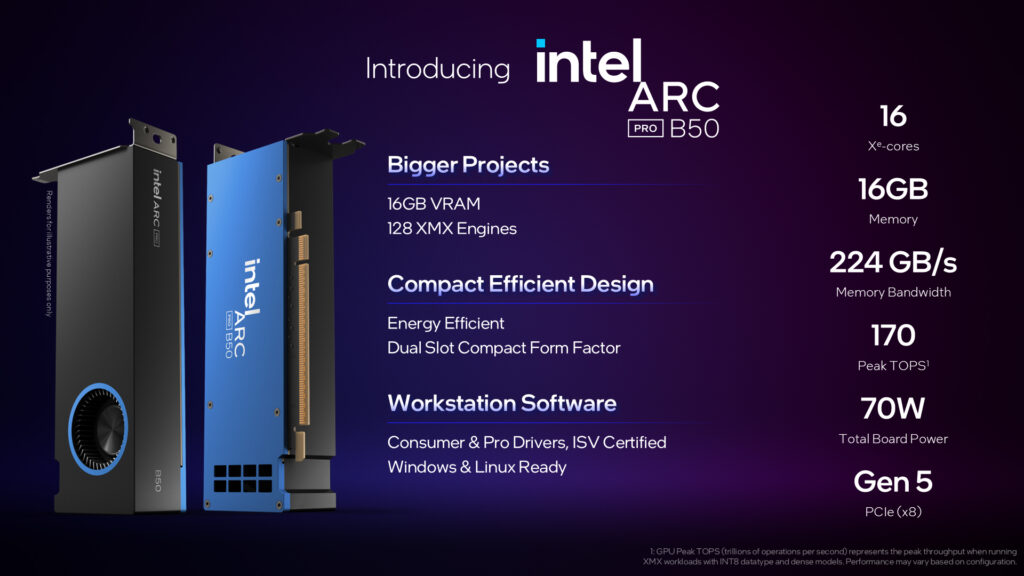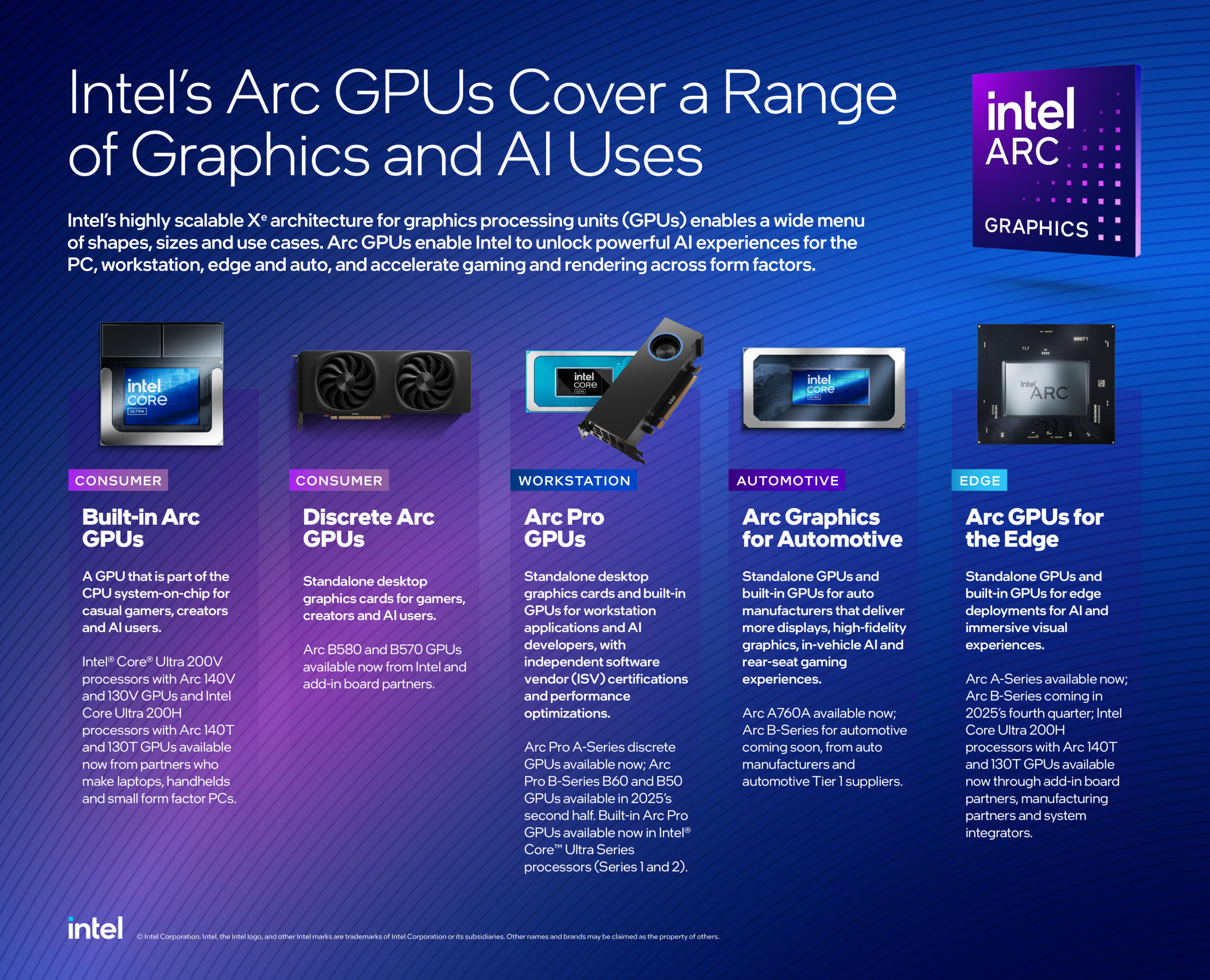Intel has officially entered the ring with two powerful and shockingly affordable GPUs aimed squarely at AI developers, researchers, and enthusiasts. Meet the Intel ARC Pro B50 and B60—professional-grade GPUs designed to make local AI development not only accessible but also budget-friendly.
Let’s dive into what these cards bring to the table and why this announcement is such a game-changer.
ARC Pro B50: A $299 Powerhouse for Entry-Level AI

At just $299, the Intel ARC Pro B50 is redefining expectations for entry-level professional GPUs. It comes with:
- 16 GB of GDDR6 VRAM
- 128 XMX Engines
- 170 TOPS (INT8)
- 224 GB/s memory bandwidth
- PCIe Gen 5 x8 interface
- 70W power draw with a 6-pin connector
This compact dual-slot GPU is ideal for small workstations and is energy-efficient while still delivering powerful AI compute performance. The 16GB of VRAM is especially helpful for running large language models (LLMs) or image generation tools locally—where memory often becomes a bottleneck.
Its form factor and low power requirements make it an easy fit into most systems, even those without high-wattage power supplies.
ARC Pro B60: A Serious Upgrade for Heavier Workloads

If you’re looking for something more robust, the ARC Pro B60 takes it to the next level:
- 24 GB of GDDR6 VRAM
- 160 XMX Engines
- 197 TOPS (INT8)
- 456 GB/s memory bandwidth
- PCIe Gen 5 x8 interface
- 120W–200W board power (likely needs an 8-pin connector)
- Multi-GPU support under Linux
Designed for serious inference tasks, the B60 is ideal for more demanding projects like multi-agent simulations, autonomous systems, and deep neural network inference. It supports multi-GPU configurations under Linux, which is especially important for teams looking to scale AI workloads affordably—outside of the Nvidia CUDA ecosystem.
B50 vs. B60: Side-by-Side Comparison
| Feature | ARC Pro B50 | ARC Pro B60 |
|---|---|---|
| VRAM | 16 GB | 24 GB |
| XMX Engines | 128 | 160 |
| TOPS (INT8) | 170 | 197 |
| Memory Bandwidth | 224 GB/s | 456 GB/s |
| PCIe Interface | Gen 5 x8 | Gen 5 x8 |
| Power Draw | 70W | 120–200W |
| Power Connector | 6-pin | Likely 8-pin |
| Form Factor | Dual-slot compact | Dual-slot blower |
| Multi-GPU Support | No | Linux-only |
| Expected Price | $299 | $500 |
Both cards are excellent value propositions, with the B60 offering a serious performance bump for those able to stretch their budget. The B50, on the other hand, remains one of the most capable budget AI GPUs we’ve seen in years.
Why This Matters for AI Developers
For years, Nvidia has dominated the AI GPU market—but its high pricing and software lock-in have pushed many developers to seek alternatives. Intel’s entry offers:
- Affordable local inference capabilities
- High VRAM for large models
- PCIe Gen 5 support for high-throughput systems
- Multi-GPU scaling potential on Linux
- Open ecosystem drivers and ISV certification
This is especially impactful for independent developers, researchers, and startups who want to do cutting-edge work on a budget.
A Quick Note on Software Support
Intel’s AI software stack is still growing. While it doesn’t yet rival Nvidia’s mature CUDA ecosystem, Intel is investing in open-source AI frameworks, oneAPI, and deep learning compiler tools.
If you rely on frameworks like TensorFlow, PyTorch, or ONNX, expect improving support—but be ready for occasional compatibility hurdles.
Final Thoughts
Intel’s ARC Pro B50 and B60 are bold entries into a market hungry for alternatives. With great specs, modern architecture, and compelling price points, these cards are poised to become the go-to choice for budget-conscious AI builders.
Whether you’re experimenting with local LLMs, building your own open-source agents, or just tired of fighting for a used GPU on eBay—Intel finally gives you a reason to get excited.
